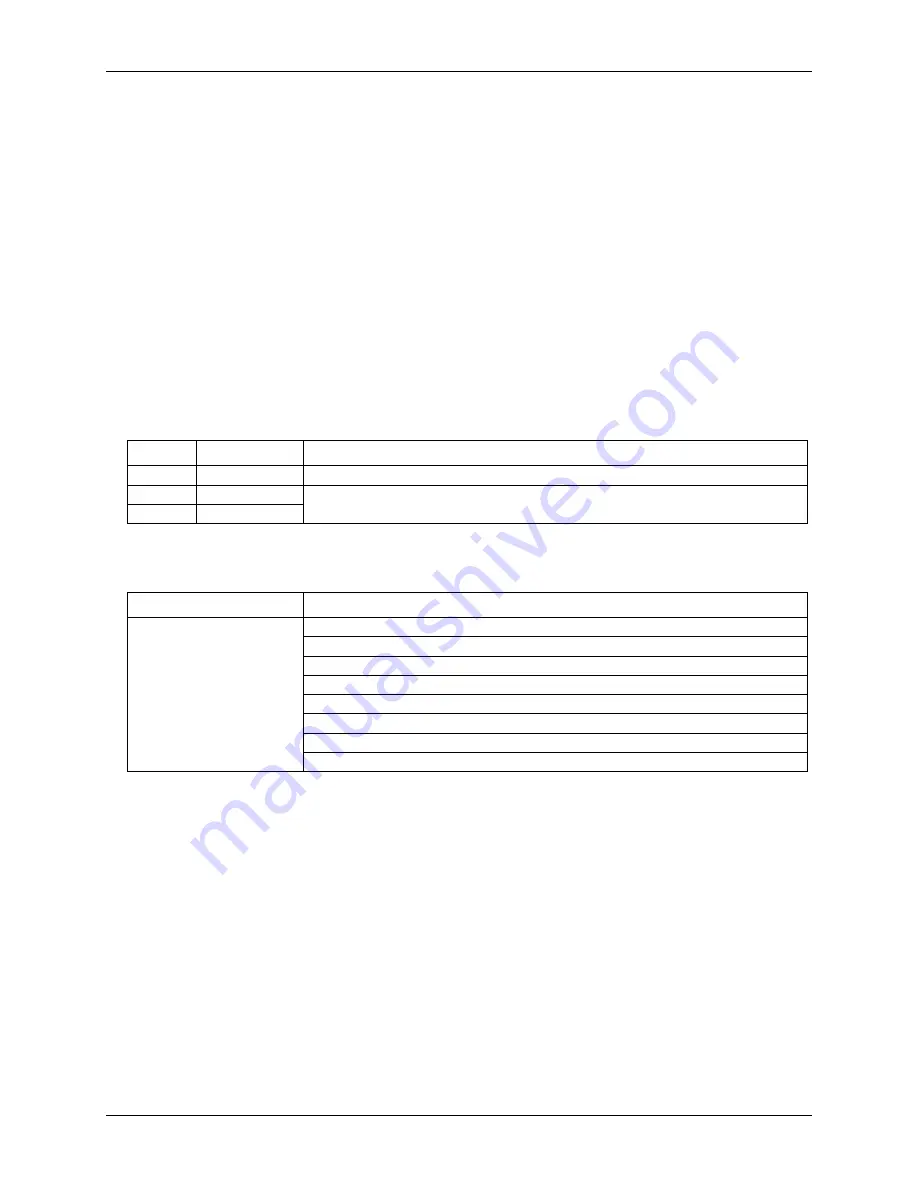
USB-2416-4AO User's Guide
Specifications
23
Note 1:
Placing a notch of the A/D digital filter at 60 Hz (setting A/D data rate = 60 S/s, 10 S/s, 5 S/s or 2.5 S/s)
further improves the common mode rejection of this frequency.
Channel configurations
When any item is changed, the firmware stores channel configurations in the EEPROM of the isolated
microcontroller. An external application issues commands over the USB to make changes, and the configuration
is made non-volatile through the use of the EEPROM.
When connecting differential voltage inputs to a floating voltage source, provide a DC return path from each
voltage input to ground. To do this, connect a resistor from each input to a GND pin (pins 18, 36, 39, 42, 44, 46,
66, 81, 84). A value of approximately 100 k
Ω can be used for most applications.
Leave unused input channels either floating or tied to GND (pins 18, 36, 39, 42, 44, 46, 66, 81, 84).
Source impedances should be kept as small as possible to avoid settling time and accuracy errors.
For each voltage/thermocouple channel configured as differential, you essentially lose one single-ended
channel. You can add channels by connecting to an AI-EXP32.
Table 2. Channel configurations
Channel Category
Specification
CxH/CxL
Thermocouple
16 differential channels
CxH/CxL
Voltage
32 individually-configurable channels that can be configured as either single-ended or
differential.
CxH/CxL
Voltage
Compatible sensors
Table 3. Compatible sensor type specifications
Parameter
Conditions
Thermocouple
J: -210 °C to 1200 °C
K: -270 °C to 1372 °C
R: -50 °C to 1768 °C
S: -50 °C to 1768 °C
T: -270 °C to 400 °C
N: -270 °C to 1300 °C
E: -270 °C to 1000 °C
B: 0 °C to 1820 °C
Accuracy
Thermocouple measurement accuracy
Thermocouple measurement accuracy specifications include polynomial linearization error, cold-junction
compensation measurement error, and system noise. These specs are for one year, or 3000 operating hours,
whichever comes first.
There is a CJC sensor for each terminal block of the module. The accuracy listed below assumes the screw
terminals are at the same temperature as the CJC sensor.
The accuracy errors shown do not include the inherent accuracy error of the thermocouple sensor itself. Contact
your thermocouple supplier for details on the actual thermocouple sensor accuracy limitations.
Connect thermocouples to the USB-2416-4AO such that they are floating with respect to GND (pins 18, 36, 39,
42, 44, 46, 66, 81, 84, 93, and 94).
When configuring thermocouple sensors, keep any stray capacitance relative to GND (pins 18, 36, 39, 42, 44,
46, 66, 81, 84) as small as possible to avoid settling time and accuracy errors.






























